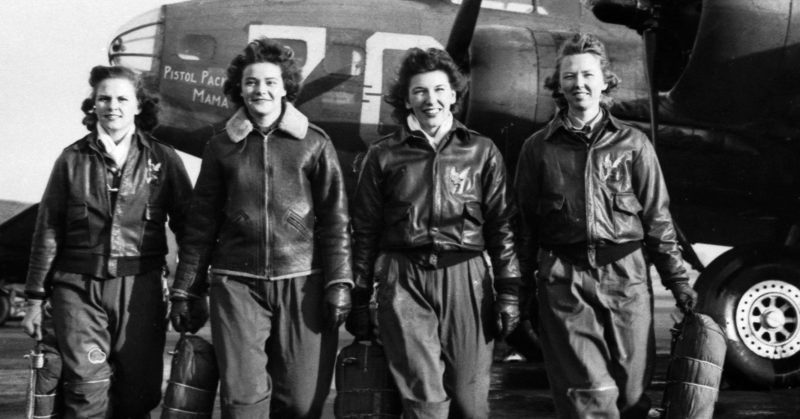It has taken an outrageous 70 years for the women of the Women Airforce Service Pilots, who served in non-combat roles in WWII, to granted permission to be buried in Arlington National Cemetery.
Arlington National Cemetery is where U.S. presidents, national heroes, and honored military personnel are buried. A law was recently signed by President Obama allowing the female pilots of WASP to be buried alongside their male counterparts.
The females were considered by the military to be civilians, even though they were trained the same as the males and slept in Army barrack, due to the non-combat nature of their duties.
None of the 38 women that died between the war and the present day were allowed to be buried with the flag, and their families received no benefits for their sacrifice. In 1944, when they were no longer needed by the army, the women were sent home had to pay their own way back. They weren’t even given honors or the status of veterans.
94-year-old Nell Bright was told when she joined in May 1943 that when the program was successful, the women of WASP would be given the status of veterans. But when the issue went to Congress it was denied. She said, “We were not very happy about it.”
In the 1970s, that unhappiness changed to pure rage after the army started bragging about how they were finally allowing women to fly military aircraft for the first time. It was the spark that ignited the campaign for recognition. It took years but finally in 1977 President Jimmy Carter signed a law that allowed them to be seen as veterans and be buried in Arlington Cemetery.
Elaine Danforth Harmon, one of the women who campaigned for recognition in the 1970s, died on April 21. Harmon wanted to be buried in Arlington, but when her family applied they were shocked to be rejected.
They later found out that the Army had changed its mind, and that the women were had been denied permission for burial at the cemetery. It was then Secretary of the Army John McHugh who made this decision. “It was done behind closed doors,” says Nell Bright.
Some pilots from the WASP program are already buried at Arlington because they were eligible at the time of their deaths. Many others were buried there only as the wife of a veteran husband, rather than on the merit of their own service.
Erin Miller, the granddaughter to Elaine Danforth Harmon, says other than a technicality no reasons were given for the change. “I felt the policy change was unjustified,” she says. The family felt that they needed to challenge this, not only for their grandmother, but for all the service women, so they started a petition on Change.org and received 170,000 signatures.
The petition was then picked up by Republican Representative Martha McSally – she herself was a servicewoman, flying as a combat fighter for the U.S. Airforce and leading a squadron of fighter pilots. “It’s been just 19 weeks since the Army’s decision to kick out our pioneering female World War II pilots was brought to light, and we’ve been fighting ever since.” This is what McSally said after hearing the Women Airforce Service Pilots Arlington Inurnment (WASP AIR) Act was passed by Congress.
It was a frustrating process for Erin Miller but when she learned the law had been enacted she was very excited. In celebration, she went and got the bill’s number tattooed on her arm, even though her sister said it was crazy. She is now hoping the application to bury their grandmother is fast-tracked but knows it could take months.
At this moment the ashes of Elaine Danforth Harmon are being kept in the closet of their home. “Nobody should have to ask Congress to bury their grandmother,” she said. Not all the pilots or the families of the pilots wanted to be buried in Arlington, however. Nell Bright said, “I don’t particularly care where I’m buried, but it’s the principle, and many of the women do want to.”
